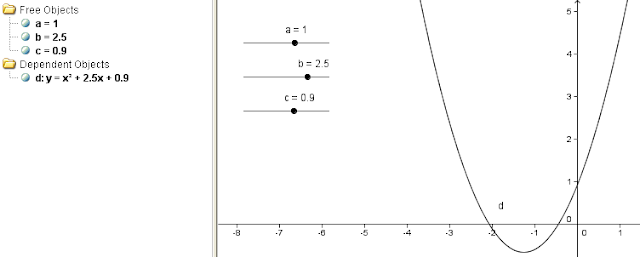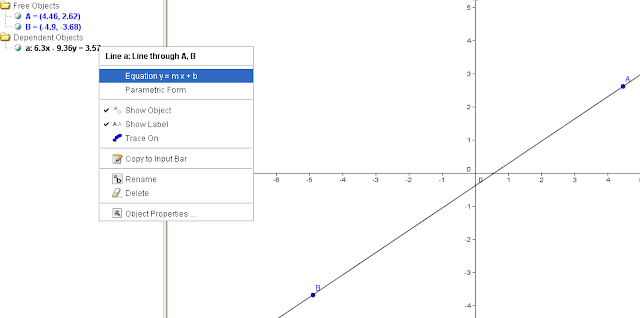An excellent YouTube video called Rip Van Winkle goes to School powerfully drives home the point of how similar our classrooms are to their one-hundred year old counterparts. Even with all of the technology that we have in our classrooms, they still produce the same results (or lack of them).
Why have we not seen the technological revolution inside the classroom that we have seen in our society? It seems like we have adopted the technology to our old ways of doing things instead of letting the technology transform education and learning.
Case in point, there are an incredible number of online videos that universities have made available to everyone. The problem is that they are lectures and many of them are about topics that we would not watch unless we needed to. I am not saying that they are not interesting lectures but if I want to learn something, I am not going to sit through a semester's worth of videos, I'll get a book.
The New Library
There is an anecdote about Richard Feynman, the noble prize winning physicist, where as a teenager he is discussing with college students about a particular Calculus term. He mispronounces the name of it because he learned it from a book and they give him a hard time. He retorts how wasteful their education is if they spend an entire semester to learn what he was able to learn in the library in an afternoon.
I love libraries and always have. Before the Internet, I spent many days sitting there and enjoying a book and absorbing information. There was no pacing guide, no test at the end, and if I wanted to read an "adult" level book there were no prerequisites.
 A community library was a relatively new concept, once reserved only for the elite. It grew in importance to society and the access to information became more and more necessary. Suddenly there was a push for literacy as a human right because it was going to determine what one's opportunities were. Knowledge was power.
A community library was a relatively new concept, once reserved only for the elite. It grew in importance to society and the access to information became more and more necessary. Suddenly there was a push for literacy as a human right because it was going to determine what one's opportunities were. Knowledge was power.However, we took this ideal to the extreme. We created an educational system that ruined the best parts of a library. What makes a library incorruptibly good is that it is voluntary and self-guided. We became obsessed with learning information and as the information increased, so did our standards. When one leaves our classrooms, what are they equipped to do? The answer is not a whole lot.
I hear and forget. I see and I remember. I do and I understand. - Confucius
Patrick and I wrote about a place called the Hub of Learning which was intended to provide the same freedom and opportunities as a library. Yet, we quickly found out that creating a school, even one with the best of intentions is difficult.
There are some schools who provide a highly personalized learning path like the School of One or a self guided curriculum like the Met School, but each of these have their drawbacks and limitations as they are still expected to do well on state standardized tests. It's as one official put it, a "false sense of freedom".
Yet all over, there are these learning opportunities emerging that are completely free from the restraints of the system. The Khan Academy allows students to learn at their own pace as much as they want for no cost. Instructables and Make provide a community encouraging hands on learning and DIY. The Hacker Spaces provide a physical place of learning and TechShop provides all of the resources and knowledge that you need.
Is it impossible to conceive of a student who wants to become a molecular biologist and decides to embark on her journey at a young age? What could a student who was filled with intrinsic motivation and resources accomplish? Much like the tech revolution that began in the garages of Steve Wozniak and Bill Gates, people are analyzing the very fundamentals of life. These Life Hackers are defying all paradigms of learning by not waiting until graduate school to make discoveries worth one's time.
This is not unique to Biology, there are Rocket Scientists, Programmers, Poets/Writers/Graphic Novelists publishing their own work, filmmakers armed only with laptops, and the list goes on.
We could say that this is a new movement but it is not. We are just seeing more of it now because of our ability to share information quickly and the ubiquity of low cost technology. It is those two components that primarily fuel my vision for what learning will look like. However, in my opinion there is one more piece to the puzzle that is needed and that is community.
We are highly social beings but our online connectivity has not necessarily translated into increased community interaction. I am able to collaborate and enjoy myself with people around the world, but I honestly do not know any of my neighbors.
Imagine all of the resources that exist online. All of the information we can imagine is available to us instantly. Yet, without the ability to make a tangible difference in our community or lives it is worthless. I have already spoken about the power of online crowdsourcing and how powerful we are when we combine our efforts, this cognitive surplus
This is a way of living that worked for thousands of years very successfully and now we have the ability to work in both a global community and also a local one. We must participate in both as the global community only thrives when the individual ones do as well. Many of our communities need help and it is we who need to stand up and do it.
How can we do this? I propose a new kind of library dedicated not just for information but for doing. The Internet reflects our love for information, but Web 2.0+ recognizes our need for doing and creating. Learning is already taking place online but it lacks a physical space to manifest and make. The desktop printer allowed for many to publish who had never before. Technology is available now that one can create almost anything from music to robots to movies to medicines.
 This place of creating would have resources available for creation and to support those who want to learn. This would encourage job growth, innovation, and economic stimulus. It would give us a reason to learn beyond just knowing for a test. Workshops and exhibitions could be coordinated through meetups large and small. Discoveries and learning would happen far faster than any textbook or curriculum ever could.
This place of creating would have resources available for creation and to support those who want to learn. This would encourage job growth, innovation, and economic stimulus. It would give us a reason to learn beyond just knowing for a test. Workshops and exhibitions could be coordinated through meetups large and small. Discoveries and learning would happen far faster than any textbook or curriculum ever could.The great strides that we made as a society came from the increasing availability of information that started with communities, increased with Libraries, and found its peak in the Internet. In order to transition to a more sustainable and healthy society, we require not a linear increase of more of the same, but a quantum leap that begins as it always has with community. This time we combine knowledge with creation.
This has to be parallel and independent. It cannot be allowed to become a system for then it will lose its power. It must be a movement not a program. A great leap of faith was made with libraries in order to allow them to be independent and free. I ask for a similar trust to placed in the evolution from simply knowing to doing and creating. Our students need a place to go where they can explore and discover passions and interests as freely as one peruses the bookshelves. They need guides and mentors who can help them become masters. Only with motivation and resources can we hope to see innovation. Remember what you learned and gained by walking the hallowed shelves of the library, let us give to the next generation an equally powerful and meaningful gift.
What would transform our culture?
Here are my 4 suggestions for transforming our culture into what we say we want it to be:
- Fund after school programs to help provide open and enriching opportunities to students. I believe that Robotics is the best way to teach students about math, science. and technology; but programs that support the humanities are equally important.
- Support technology that removes barriers to innovation. Makerbot is saving lives in 3rd world countries, Khan Academy is providing anyone with a deep understanding of Math (see a video about Sal's vision for the future of math class). I also appreciate software like Autodesk who provide their incredible design software for free to Robotics students.
- Create the 21st century Library that involves doing and creating. Providing mentoring and classes where the local community can teach, learn, support, and connect. Make them everywhere so that all students of all ages could participate.
- Encourage community activities that celebrate creativity and learning. It would be an exciting world where events like Odyssey of the Mind, Robotics Competitions, Maker Faire were so ubiquitous that thinking, making, learning, and creating were everyday activities.
This weekend, "Waiting for Superman" was at my door. As my Robotics team worked, our school held Informational sessions about our school and how to apply and be admitted via the random lottery. Students aged 5-15 came to my classroom and their eyes were huge with the possibility that they could come to a place where they could do cool things like this. One little girl maybe 10 years old, bless her heart said, "Wow Dad, now I REALLY want to go here."
It is sad that only a small portion of the population experiences an empowering eduction either because of situation, location, or the system in general. There are great schools out there but far too few of our citizens are going there and being mentored to be leaders and innovators.
If we create a culture of learning that lives and thrives outside of school and does not end when one receives their diploma, then we will see dramatic transformation in our society in every realm. That is a bold statement but I stand behind it.
These four things will transform our culture in ways we cannot even imagine. Anyone willing to partner with me in implementing them? I am well on my way, but changing a culture requires many people to be on board.
Subscribe to BrokenAirplane!





























